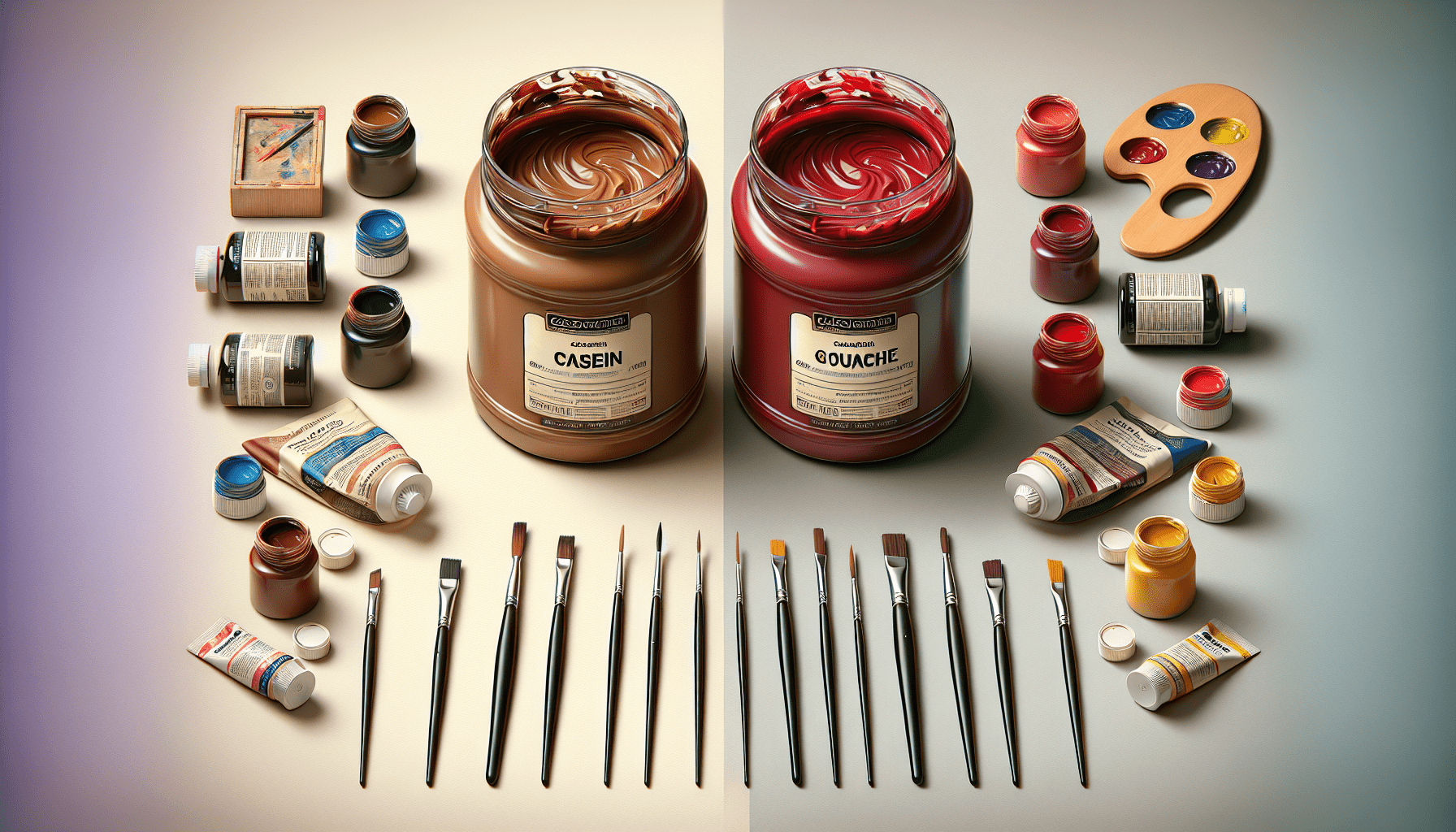What Is the Difference Between Casein and Acrylic?
Have you ever wondered about the distinction between casein and acrylic paints? As an artist or someone involved in the world of paints, understanding the characteristics and applications of different types of paints is crucial. In this article, you will explore the differences between casein and acrylic to help determine which might be best suited for your needs. We’ll delve into their composition, application methods, advantages, disadvantages, and their unique qualities. This knowledge can help you make informed decisions, especially if you’re planning to purchase paints for specific projects or artistic endeavors.

Understanding Paint Composition
Before delving into the differences between casein and acrylic paints, it’s vital to have a basic understanding of what constitutes each type of paint. Paint composition directly affects their behavior, texture, and utility in various fields of work.
What is Casein Paint?
Casein paint is a fast-drying, water-soluble paint created from milk protein, which is casein. Traditionally used by artists, it has a history dating back thousands of years. Casein paint is known for its smooth, matte finish, and its ability to be reworked when wet. As a versatile medium, it is commonly used in studio applications, particularly for fine art purposes.
Key Characteristics of Casein:
- Binder: Derived from milk protein, known as casein.
- Solvent: Water-based, making it easy to clean up.
- Finish: Matte, with a distinctive luminous quality.
What is Acrylic Paint?
Acrylic paint is a modern invention that has gained popularity due to its versatility and durability. Composed of pigment suspended in an acrylic polymer emulsion, it can mimic the appearance of both oils and watercolors. Known for its quick drying time, acrylics are widely used in various artistic and industrial applications.
Key Characteristics of Acrylic:
- Binder: Synthetic acrylic polymer.
- Solvent: Water-based but becomes water-resistant when dry.
- Finish: Available in matte, satin, or gloss finishes depending on formulation and additives.
Comparing Composition and Properties
Understanding the fundamental properties of casein and acrylic paints can help you make a well-informed choice suited to your specific artistic or practical needs. Here, we compare their composition and inherent properties.
Composition
| Characteristic | Casein | Acrylic |
|---|---|---|
| Binder | Casein protein from milk | Acrylic polymer |
| Solvent | Water, becomes insoluble once dry | Water, dries and becomes water-resistant |
| Thinning Agent | Water | Water or acrylic mediums |
Texture and Finish
Casein dries to a velvety, matte finish, often appreciated for its richness and ability to reflect light in subtle ways. Acrylic paints, on the other hand, can achieve a variety of finishes, ranging from matte to high gloss. This variability allows acrylics to be adaptable in different artistic styles and preferences.
Durability and Longevity
Acrylic paints are well-regarded for their durability and resistance to moisture, making them suitable for both indoor and outdoor applications. Their synthetic composition contributes to their long-lasting quality. Casein paints, while offering a unique and desirable finish, are less moisture-resistant unless properly sealed. Consequently, casein is best suited for indoor use or protected environments.
Application Methods and Techniques
The choice between casein and acrylic may also depend on the techniques you plan to employ in your work. Each type of paint offers unique characteristics that can be leveraged in specific artistic processes.
Application of Casein Paint
Casein paint can be used directly on a variety of surfaces, including canvas, paper, and wood. Its reworkable nature when wet makes it an excellent choice for fine, detailed work. Artists appreciate its ability to build up layers without muddying colors, due to its quick drying time. However, one must ensure the painting remains dry since it might reabsorb water if exposed to moisture.
Application of Acrylic Paint
Acrylic paints are highly versatile, offering a wide range of consistencies through the use of gels and mediums. They can be applied to various surfaces, including canvas, paper, and even fabric. Artists can employ techniques that range from thin glazes to thick impasto. The paint’s rapid drying time allows for quick layering, as previous layers dry to an impermeable film, making acrylic paints resistant to reworking.
Advantages and Disadvantages
Both casein and acrylic paints come with their unique sets of advantages and potential drawbacks. Understanding these can assist in selecting the right paint for your project.
Advantages of Casein
- Matte Finish: Provides a rich, luminous matte appearance.
- Blendability: Allows for seamless blending and transitions in colors.
- Historical Appeal: Offers a connection to traditional art practices.
Disadvantages of Casein
- Moisture Sensitivity: Requires a fixative or varnish to enhance durability.
- Limited Shelf Life: Pre-mixed casein paints might spoil and require refrigeration.
- Less Versatile: Cannot replicate the wide range of finishes that acrylics can.
Advantages of Acrylic
- Versatility: Supports a variety of techniques and effects.
- Durability: Offers excellent weather resistance when dry.
- Fast Drying Time: Facilitates rapid progress in painting.
Disadvantages of Acrylic
- Lacks the Luminosity: Might not achieve the same luminous effect as casein.
- Fast Drying Time: May not be conducive to extended blending.
- More Synthetic: Lacks the traditional appeal associated with casein.

Ideal Scenarios for Each Paint Type
Selecting between casein and acrylic paints can be influenced by the specific context and requirements of your project. Here are some ideal scenarios for each:
When to Use Casein Paint
Casein is best suited for projects that emphasize fine detail and traditional techniques. It offers a unique aesthetic, particularly in studio-based artworks like portraiture or landscapes, where controlled blending and rich colors are desired. Additionally, if an artist is interested in historical art practices, casein provides a direct link to older painting traditions.
When to Use Acrylic Paint
Acrylics are often preferable for projects that require versatility and fast drying. Ideal for modern and experimental artworks, they are also excellent for mural paintings, outdoor signs, and mixed media works. Artists who like to build texture or work quickly will find acrylics advantageous due to their quick drying nature.
Conclusion
The difference between casein and acrylic paints lies predominantly in their composition, application, and finish. Casein paint, with its rich, matte appearance, offers a connection to traditional painting styles, whereas acrylics provide a modern avenue with their versatility and durability. Your choice depends largely on your artistic style, project requirements, and the desired aesthetic outcome. With this understanding, you can confidently select the paint type that best aligns with your creative vision and practical needs.



